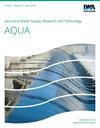利用水化学和同位素资料对济南泉岩溶含水层的区域和嵌套流动系统进行制图
IF 4.3
Q2 Environmental Science
引用次数: 1
摘要
该研究增强了对喀斯特水流系统中水输运演化的认识。本文从水文地球化学的角度探讨了岩溶水流系统。在补给区,岩溶水的水化学效应主要受溶蚀和过滤作用的影响。在断裂带和集中泄放区,主要受混合作用的影响。在地热区,溶蚀作用、降水作用和白云化作用是主导因素。从南向北,喀斯特水化学类型由HCO3-Ca型逐渐转变为SO4·Cl-Ca·Na型。大气降水是岩溶水补给的主要来源,补给海拔范围为181 ~ 1495 m。根据地质钻探统计,地下水输送深度由南部的浅层输送过渡到北部的深层输送,深度范围为3000 ~ 3500 m,利用同位素资料得到地下水滞留时间范围为6 ~ 27000年。地下水运移方式分为三个层次:开浅输运岩溶冷水潜流、半开中深输运岩溶冷水承压流和弱开深输运地热承压水流。本文章由计算机程序翻译,如有差异,请以英文原文为准。
Mapping regional and nested flow systems in the karst aquifers of Jinan spring using hydrochemical and isotope data
This study enhances the understanding of the evolution of water transport in karst water flow systems. This paper explores the karst water flow system from a hydrogeochemical perspective. It has been discovered that in the recharge area, the hydrochemical effect of karst water is primarily influenced by dissolution and filtration. In the fault zone and concentrated discharge area, it is primarily influenced by mixing. In the geothermal area, the dominant factors are dissolution, precipitation, and dolomitization. From the southern to the northern area, the hydrochemical type of karst water gradually changes from HCO3-Ca type to SO4·Cl-Ca·Na type. Atmospheric precipitation is the primary recharge source of karst water, with a recharge elevation range of 181–1,495 m. According to geological drilling statistics, the groundwater transport depth transits from the shallow transport in the south to the deep transport in the north, with a depth range of 3,000–3,500 m, and using isotope data to obtain the groundwater retention time range is 6–27,000 years. The groundwater transport mode is divided into three levels: open-shallow transport karst cold water phreatic flow, semi-open-medium-deep transport karst cold water confined flow, and weak open-deep transport geothermal water confined water flow.
求助全文
通过发布文献求助,成功后即可免费获取论文全文。
去求助
来源期刊
CiteScore
4.70
自引率
0.00%
发文量
74
审稿时长
4.5 months
期刊介绍:
Journal of Water Supply: Research and Technology - Aqua publishes peer-reviewed scientific & technical, review, and practical/ operational papers dealing with research and development in water supply technology and management, including economics, training and public relations on a national and international level.

 求助内容:
求助内容: 应助结果提醒方式:
应助结果提醒方式:


